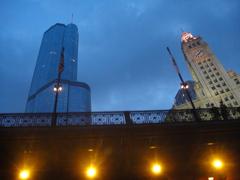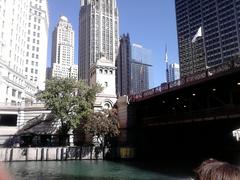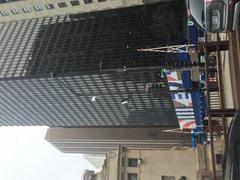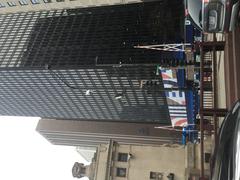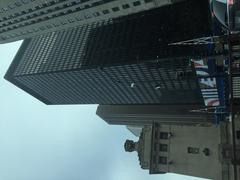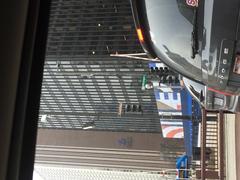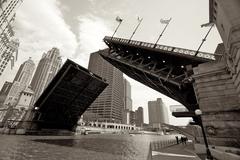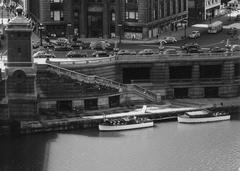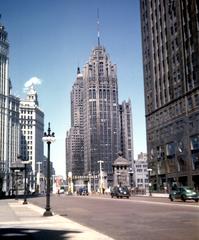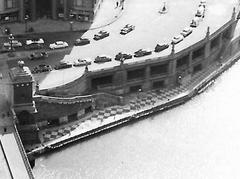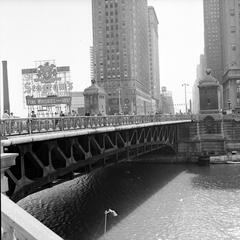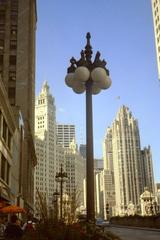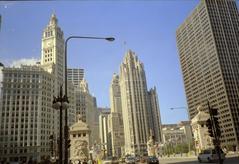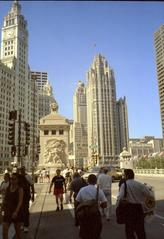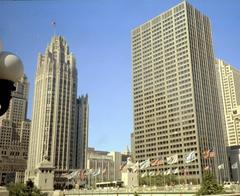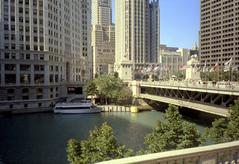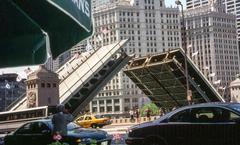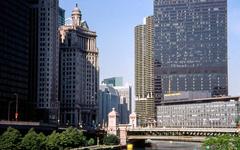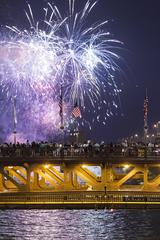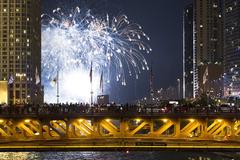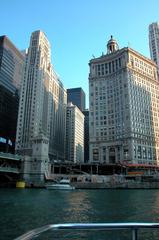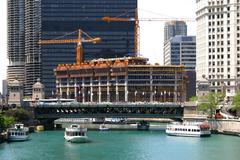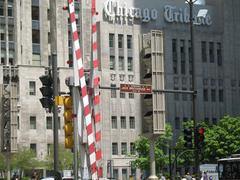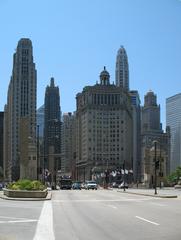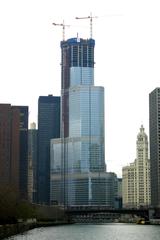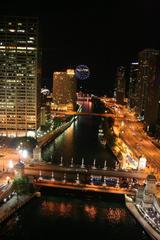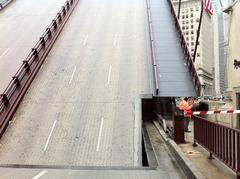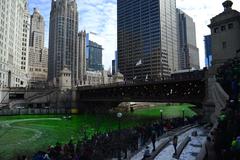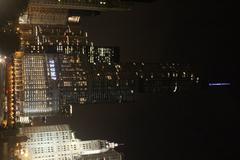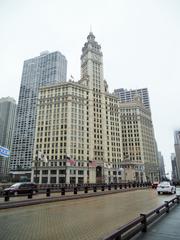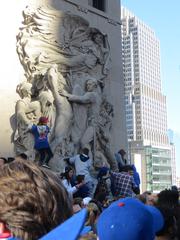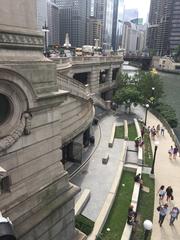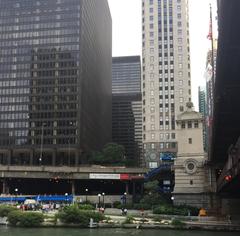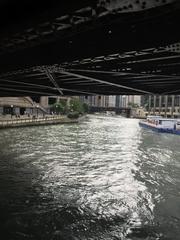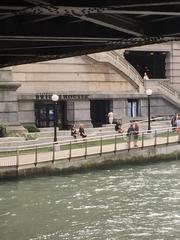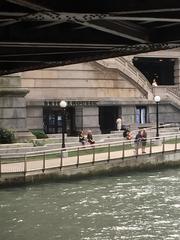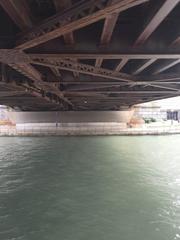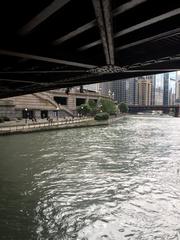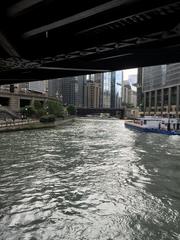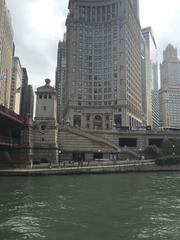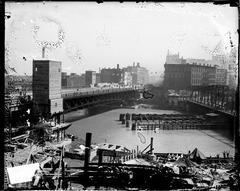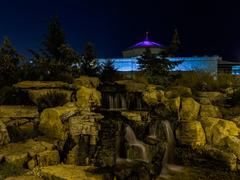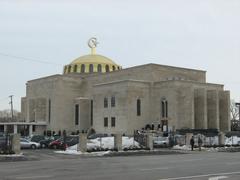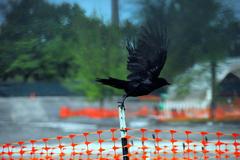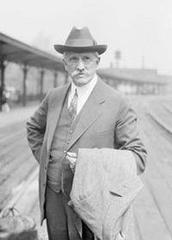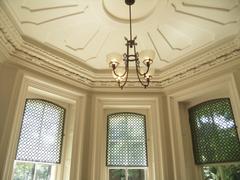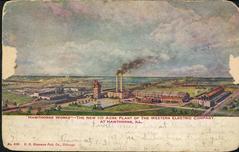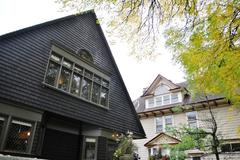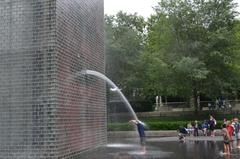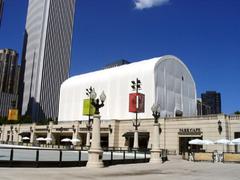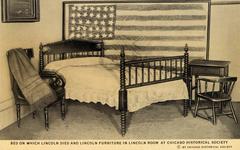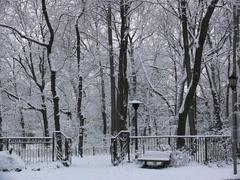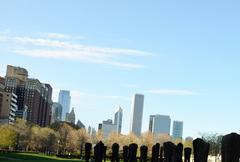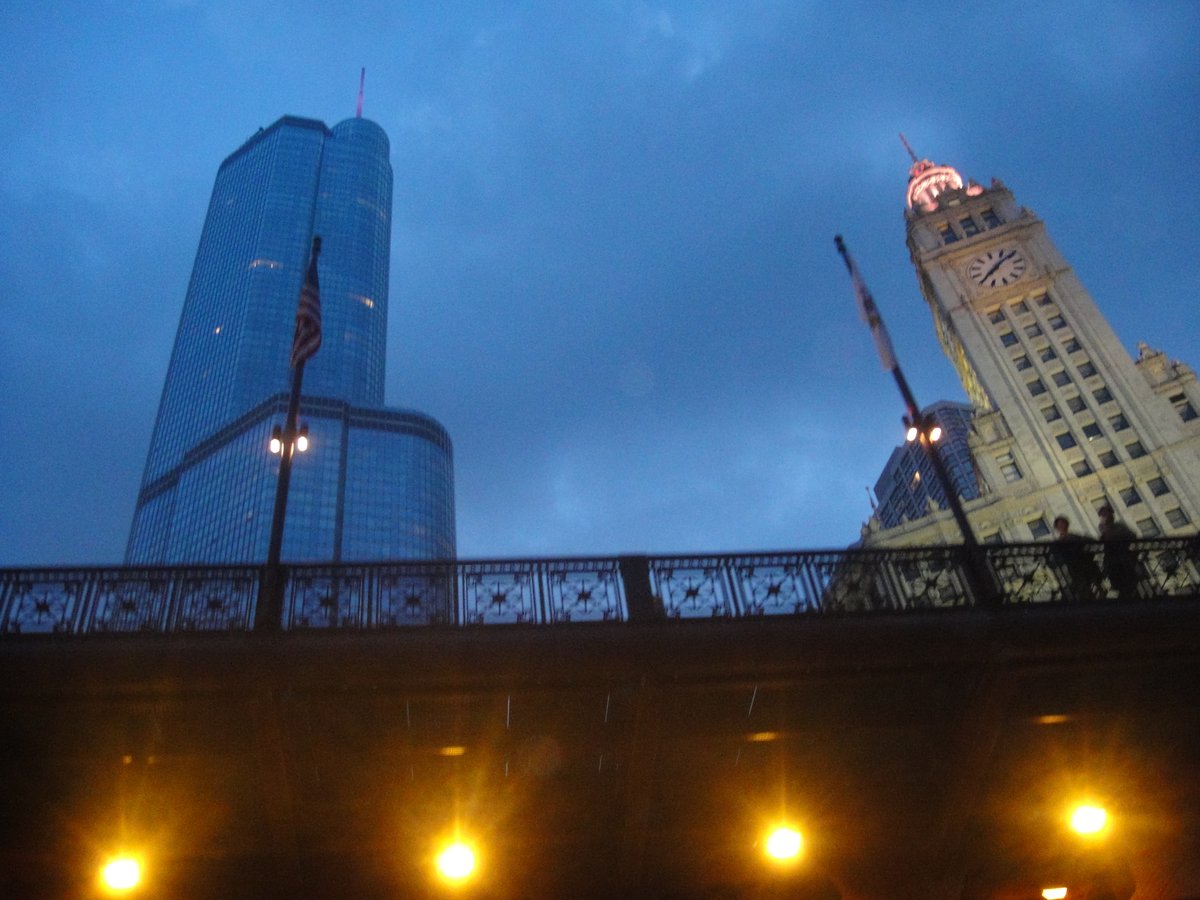
DuSable Bridge Visiting Hours and Tickets Guide
Last Updated Date: 18/07/2024
Why Visit DuSable Bridge in Chicago
The DuSable Bridge, an iconic landmark in the heart of Chicago, stands as a testament to the city’s rich history and architectural prowess. Originally known as the Michigan Avenue Bridge, it was renamed in 1939 to honor Jean Baptiste Point du Sable, the Haitian-born pioneer often referred to as the “Founder of Chicago.” This historic structure is not only a vital transportation link but also a symbol of the city’s development and cultural heritage (source).
The bridge’s history is intertwined with Chicago’s growth. From the early wooden bridges of the 1830s to the sophisticated double-decker design implemented in 1920, each iteration of the bridge reflects the city’s evolving needs and technological advancements. The DuSable Bridge, in particular, showcases the Beaux-Arts architectural style, characterized by grandeur and intricate ornamentation, which adds a touch of elegance to its robust engineering (source).
Visitors to the DuSable Bridge can explore its historical significance, marvel at its architectural features, and enjoy breathtaking views of the Chicago River and the city’s skyline. This guide provides a comprehensive overview of the bridge’s history, architectural marvels, and practical visitor information, ensuring a memorable and enriching experience for all.
Contents Overview
- Introduction
- History and Significance
- Early Bridges and Chicago’s Growth
- The Rush Street Bridge Era
- The Birth of the Michigan Avenue Bridge (1920)
- Renaming and Recognizing DuSable’s Legacy
- Visitor Information
- Visiting Hours and Tickets
- Travel Tips and Accessibility
- Nearby Attractions
- Special Events and Guided Tours
- Photographic Spots
- Architectural Features of DuSable Bridge
- Double-Decker Design and Functionality
- Beaux-Arts Influence and Ornamental Details
- Four Iconic Towers
- Terracotta Ornamentation
- Bronze Embellishments
- Structural Elements and Engineering Prowess
- Trunnion Bascule Bridge
- Steel Construction
- Counterweights and Gears
- Renovation and Preservation Efforts
- Structural Repairs
- Cleaning and Restoration
- Lighting Upgrades
- FAQ
- Conclusion
Introduction
The DuSable Bridge, a symbol of Chicago’s vibrant history and architectural prowess, stands as a testament to the city’s evolution. This article delves into its rich past, significance, and essential visitor information, ensuring a comprehensive guide for anyone interested in this iconic landmark.
History and Significance
Early Bridges and Chicago’s Growth
Before the iconic DuSable Bridge graced the Chicago River, a series of earlier bridges occupied its place, each marking a stage in the city’s development. The very first bridge, a simple wooden structure, emerged in 1832. As Chicago’s population boomed, driven by its strategic location as a transportation hub, the need for a more robust bridge became evident.
The year 1840 saw the construction of the first bridge at the site to be officially named – the Dearborn Bridge. This structure, too, proved inadequate for the burgeoning traffic, leading to its replacement by a swing bridge in 1868. This new bridge, while an improvement, still struggled to cope with the ever-increasing maritime and road traffic.
The Rush Street Bridge Era
In 1884, a double-deck bridge, christened the Rush Street Bridge, replaced its predecessor. This bridge, with its upper deck dedicated to cable cars and the lower level accommodating other vehicles and pedestrians, represented a significant leap in bridge design and capacity. However, the dawn of the 20th century brought new challenges.
The rise of automobiles and the need to alleviate traffic congestion along the Chicago River demanded a more modern solution. The city sought a bridge that could handle the increasing traffic flow while also allowing for the smooth passage of larger vessels.
The Birth of the Michigan Avenue Bridge (1920)
The year 1920 marked a turning point with the completion of the Michigan Avenue Bridge, later renamed the DuSable Bridge in 1939. Designed by the renowned Chicago architectural firm Holabird & Roche, the bridge was a triumph of engineering and aesthetics. Its construction, costing $12 million, reflected the city’s commitment to creating a landmark that would stand the test of time.
The bridge’s design, inspired by the Beaux-Arts style, incorporated ornate lampposts, decorative railings, and four iconic bridge houses. These bridge houses, inspired by those on the Seine River in Paris, became a defining feature of the bridge and a symbol of Chicago’s architectural grandeur.
Renaming and Recognizing DuSable’s Legacy
In 1939, the Michigan Avenue Bridge underwent a significant transformation – it was renamed the DuSable Bridge, honoring the legacy of Jean Baptiste Point du Sable. This Haitian-born pioneer, often hailed as the “Founder of Chicago,” established the first permanent settlement in the area in the late 18th century.
The renaming of the bridge served as a powerful symbol of recognition for DuSable’s contribution to Chicago’s history. It acknowledged the role of this often-overlooked figure in laying the foundation for the city’s growth and development.
Visitor Information
Visiting Hours and Tickets
The DuSable Bridge is accessible 24/7, allowing visitors to explore its historic and architectural beauty at any time. There are no tickets required to visit the bridge itself, but some guided tours may have associated costs.
Travel Tips and Accessibility
- Public Transport: The bridge is easily accessible via public transportation, with several bus and train routes stopping nearby.
- Parking: There are multiple parking garages within walking distance of the bridge. However, street parking may be limited.
- Accessibility: The bridge is pedestrian-friendly and equipped with ramps, making it accessible for visitors with mobility challenges.
Nearby Attractions
- Magnificent Mile: A world-renowned shopping district located just north of the bridge.
- Millennium Park: A scenic park featuring iconic attractions like the Cloud Gate (The Bean) and the Jay Pritzker Pavilion, located a short walk from the bridge.
- Chicago Riverwalk: A beautiful walking path along the Chicago River, perfect for a leisurely stroll.
Special Events and Guided Tours
The DuSable Bridge often serves as a backdrop for various events and festivals throughout the year. Guided tours are available, providing in-depth historical insights and architectural details. Check local listings or the official website for upcoming events and tour schedules.
Photographic Spots
For photography enthusiasts, the bridge offers stunning views of the Chicago River and the city’s skyline. The best times for capturing photos are during sunrise and sunset when the lighting accentuates the bridge’s architectural features.
Architectural Features of DuSable Bridge
The DuSable Bridge reflects the city’s evolution, showcasing elements from different eras that have shaped its identity.
Double-Decker Design and Functionality
One of the most striking features of the DuSable Bridge is its double-decker design. This innovative approach, implemented in 1920, addressed the pressing traffic congestion issues of the time. The upper level, originally intended for passenger vehicles, now caters to automobiles, while the lower level accommodates buses and serves as a crucial link for the Chicago Transit Authority (CTA) buses. This separation of traffic streamlines movement and minimizes congestion, a testament to the bridge’s enduring functionality.
Beaux-Arts Influence and Ornamental Details
The DuSable Bridge stands as a prominent example of the Beaux-Arts architectural style, popular in the early 20th century. This style, characterized by grandeur and intricate ornamentation, is evident in the bridge’s elaborate design.
- Four Iconic Towers: The bridge is flanked by four stately towers, each rising majestically at its corners. These towers, constructed from granite and adorned with decorative elements, serve as visual anchors, adding a sense of monumentality to the structure.
- Terracotta Ornamentation: Adding a touch of elegance, the bridge incorporates decorative elements made of terracotta. These intricate details, often featuring floral motifs and geometric patterns, highlight the craftsmanship prevalent during the bridge’s construction.
- Bronze Embellishments: Further enhancing its aesthetic appeal, the bridge features bronze embellishments throughout its structure. These decorative accents, ranging from lampposts to railings, add a touch of sophistication and reflect the attention to detail characteristic of the Beaux-Arts style.
Structural Elements and Engineering Prowess
Beyond its aesthetic beauty, the DuSable Bridge is a marvel of engineering, showcasing innovative techniques of its time.
- Trunnion Bascule Bridge: The bridge operates as a trunnion bascule bridge, a type of movable bridge that rotates upward to allow boats and ships to pass. This engineering feat, a defining characteristic of Chicago’s river system, allows for the seamless flow of both road and water traffic.
- Steel Construction: The bridge’s primary structure is built from robust steel, a material renowned for its strength and durability. This choice of material reflects the industrial character of early 20th-century Chicago and ensures the bridge’s longevity.
- Counterweights and Gears: The bridge’s raising and lowering mechanism relies on a complex system of counterweights and gears. This intricate system, hidden within the bridge’s towers, allows for the smooth and controlled movement of the massive structure.
Renovation and Preservation Efforts
Recognizing the DuSable Bridge’s historical and architectural significance, the city of Chicago has undertaken several renovation and preservation efforts to ensure its longevity. These efforts include:
- Structural Repairs: Regular inspections and maintenance work address any structural issues, ensuring the bridge’s stability and safety.
- Cleaning and Restoration: Periodic cleaning removes grime and pollution, restoring the bridge’s original luster. Restoration efforts focus on preserving the intricate terracotta and bronze details.
- Lighting Upgrades: The bridge’s lighting system has undergone upgrades to enhance its visual impact while improving energy efficiency.
These ongoing efforts reflect the city’s commitment to preserving its architectural heritage for generations to come.
FAQ
Q: What are the visiting hours for the DuSable Bridge?
A: The bridge is accessible 24/7.
Q: Are there guided tours available for the DuSable Bridge?
A: Yes, guided tours are available and provide detailed information about the bridge’s history and architecture.
Q: Is the DuSable Bridge accessible for visitors with disabilities?
A: Yes, the bridge is equipped with ramps and is pedestrian-friendly.
Conclusion
The DuSable Bridge is not just a bridge; it is a symbol of Chicago’s past, present, and future. Whether you’re a history buff, an architecture enthusiast, or a casual visitor, the bridge offers something for everyone. Be sure to explore this iconic landmark and immerse yourself in the rich tapestry of Chicago’s history.
For more updates and information, download the mobile app Audiala, check out other related posts, or follow us on social media.
